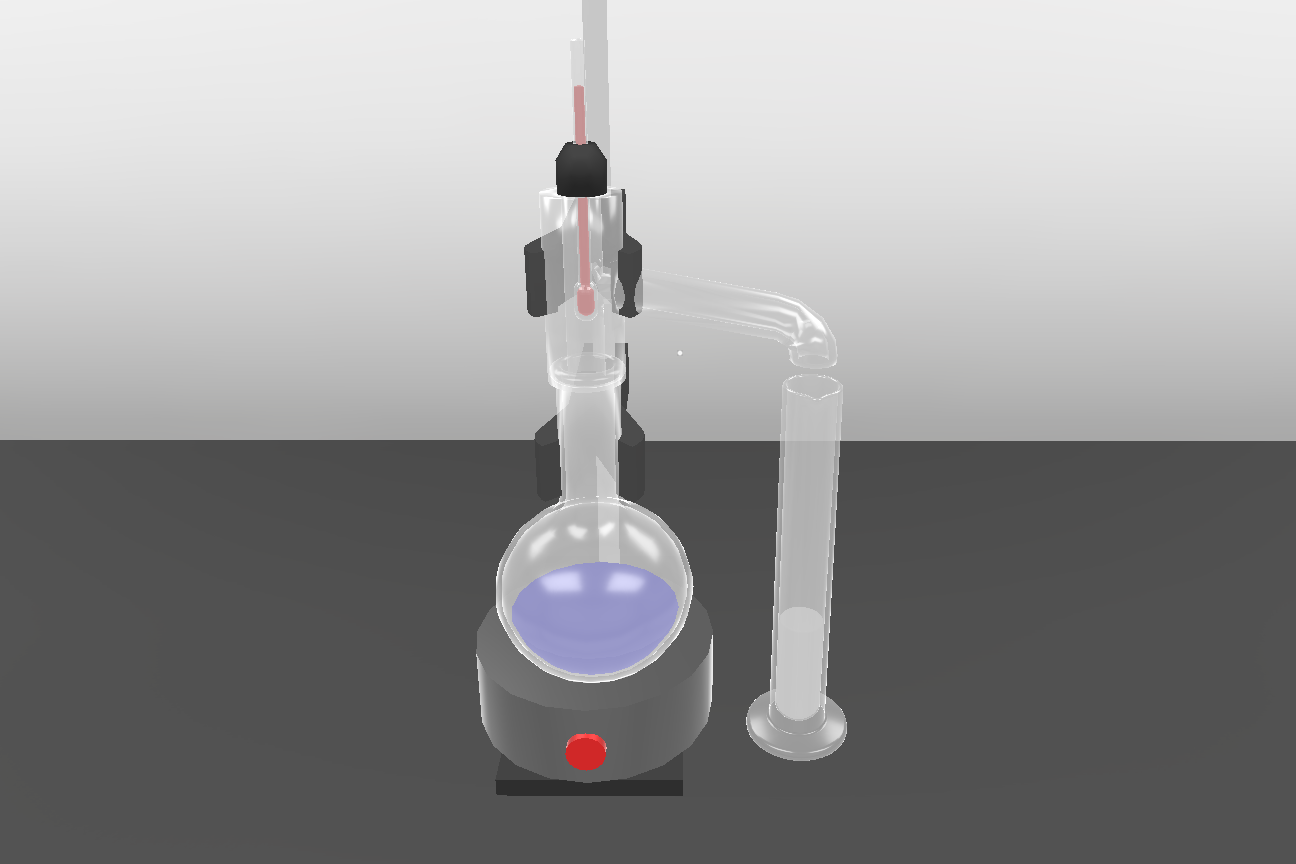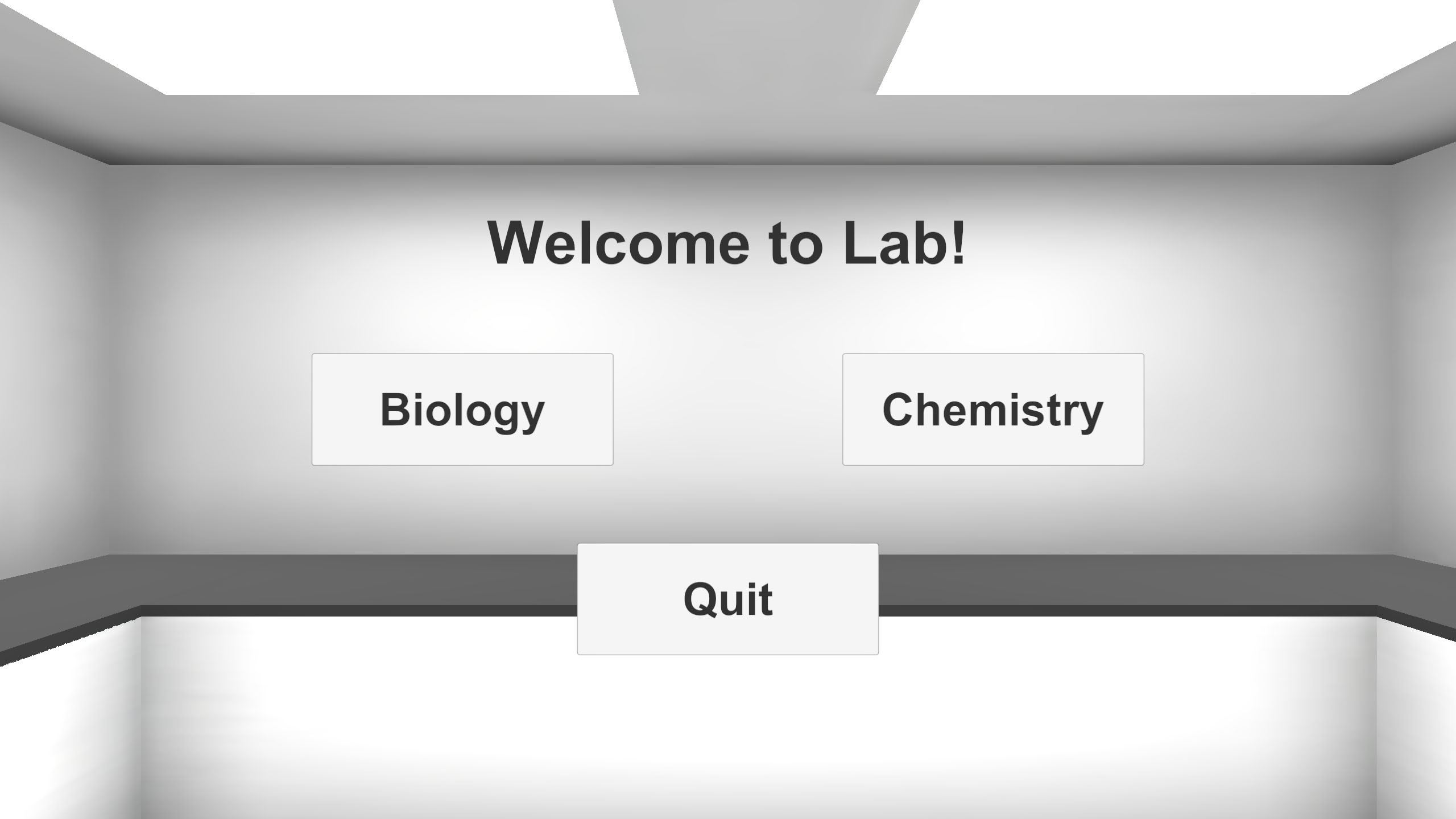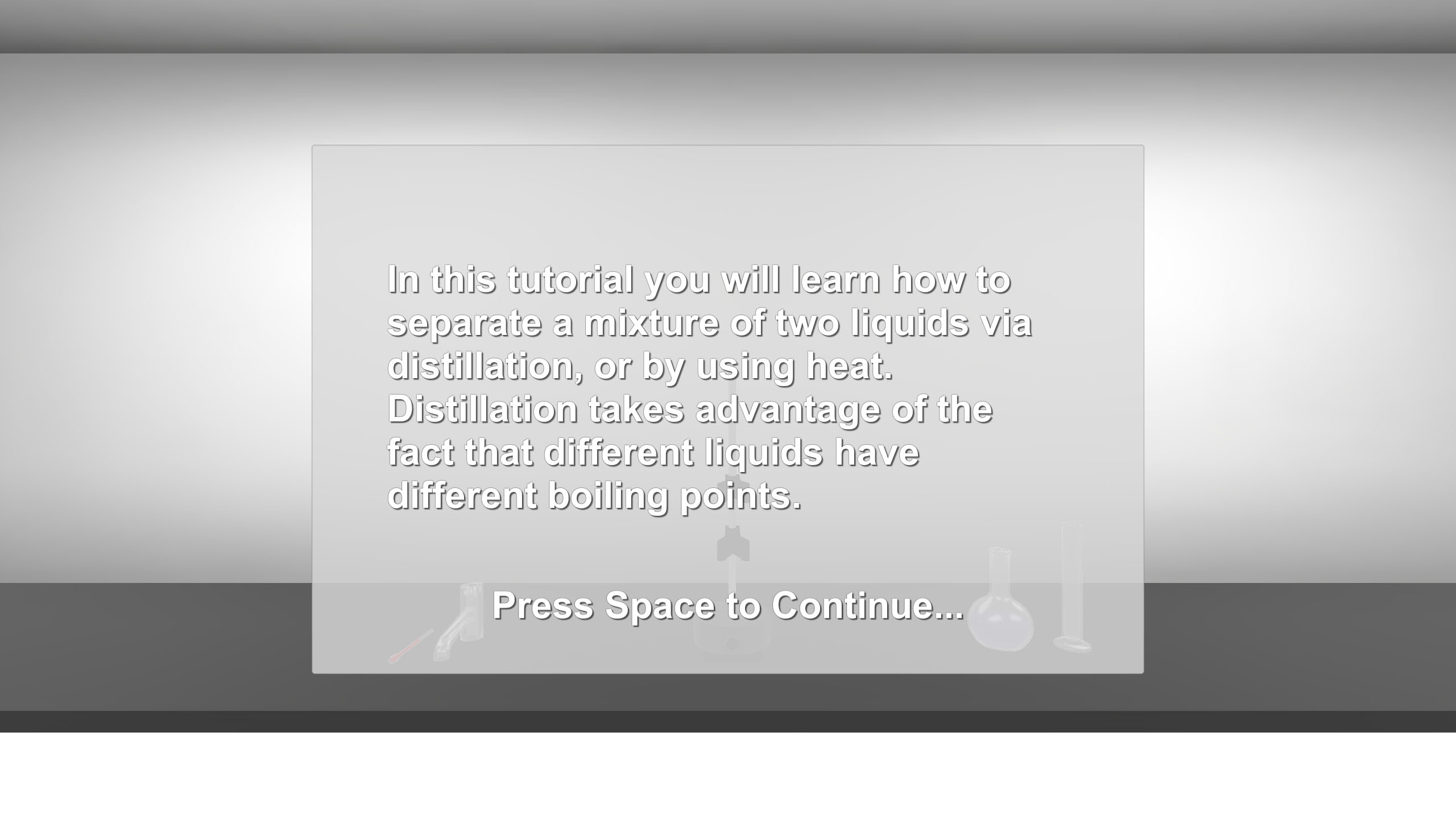
Figure 1

Figure 2

Team 6
Team Members |
Faculty Advisor |
Patricio Panico |
Ion Mandoiu Sponsor CGI |
sponsored by

Our project, Lab Training Simulation, is a virtual reality lab environment where users can perform either of two labs. We implemented two different experiments. The first was a Biology lab: Transpiration & Photosynthesis that allows users to learn the process of photosynthesis. We also implemented a Chemistry lab: Distillation of Cyclohexane-Toluene from which users can learn how a mixture of two different solutions can be separated by heat. To implement this project, we mainly used Unity, an established, free platform for XR development and Blender, a free and open-source program for building 3D models from scratch. In Unity we were able to create a lab environment, add our assets (lab equipment) and write scripts to take the user through the steps of the lab. We used blender to make specific lab equipment that was not already available to us in Unity’s free asset store. We also used Windows Standalone as our platform to export our project. Users are able to download the executable from a website and then run the program locally on their device. We wanted to make this project the best possible learning experience it could be for the user, so we focused on making it interactive and adding different learning components. These learning components included two different modes: a tutorial mode and a quiz mode. In either mode the user would be able to interact with the lab equipment and complete the steps themselves. The tutorial mode outlines the steps for the user to follow. The quiz mode allows the user to complete it themselves and tells the user if they’ve made an error and need to start over. Apart from just making our project a quality learning experience, we found a couple of key benefits to the virtual reality lab setting including. These benefits include visualization of safety protocols and lab procedures, speedup of long experiments or slowdown of fast experiment, and studying how modifying the procedure impacts the experiment without risk of causing harm.
